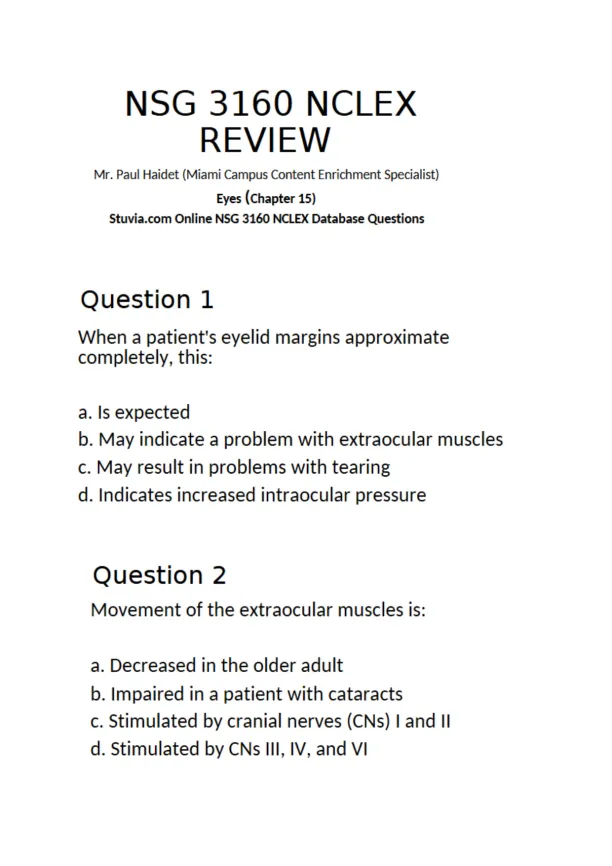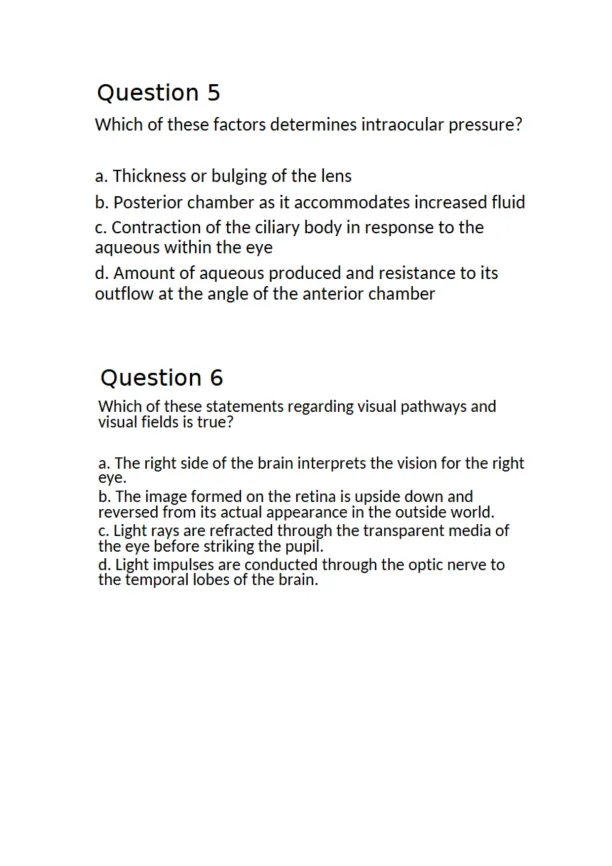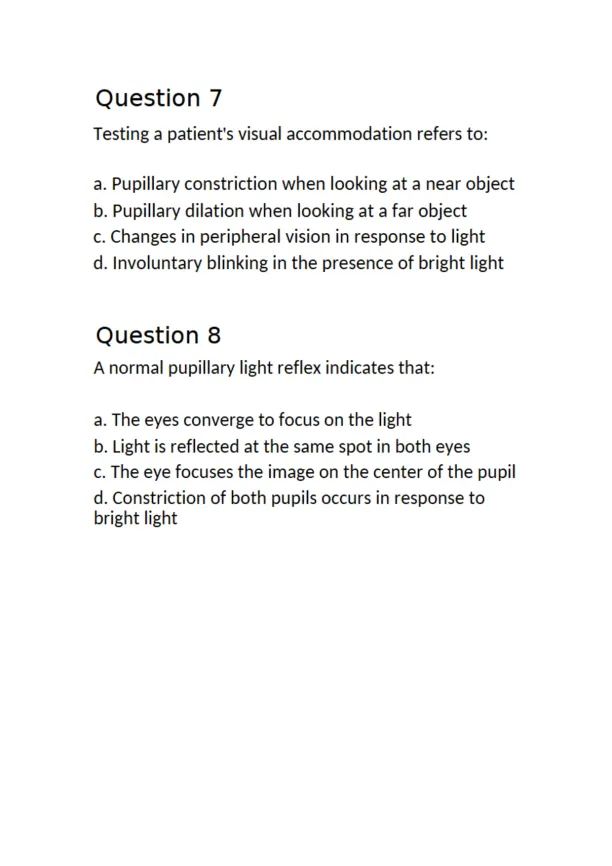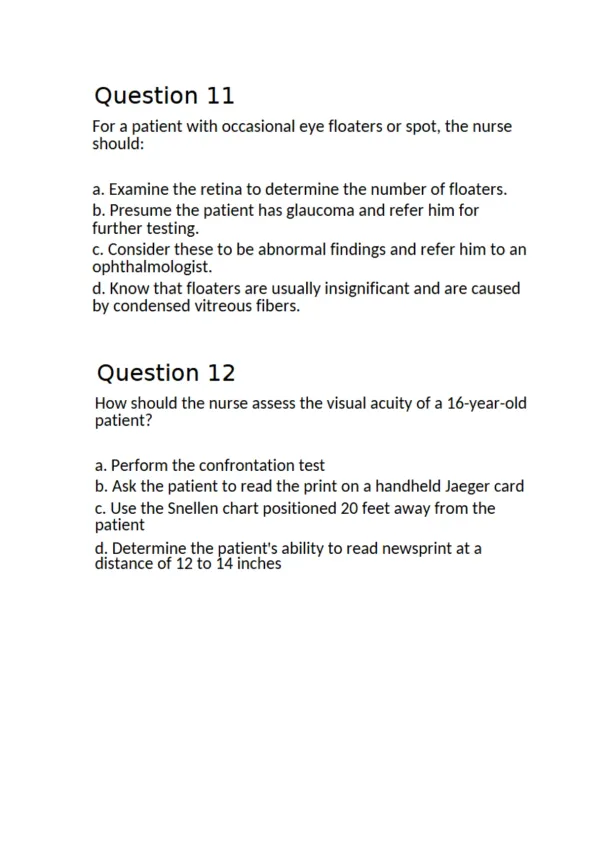Page 1

Loading page image...
Page 2

Loading page image...
Page 3

Loading page image...
Page 4

Loading page image...
Page 5

Loading page image...
Page 6

Loading page image...
This NCLEX-style quiz focuses on eye anatomy, function, cranial nerves, and visual pathways—essential content for nursing students reviewing ophthalmologic assessment and preparing for the NCLEX-RN exam.
Loading page image...
Loading page image...
Loading page image...
Loading page image...
Loading page image...
Loading page image...
This document has 19 pages. Sign in to access the full document!